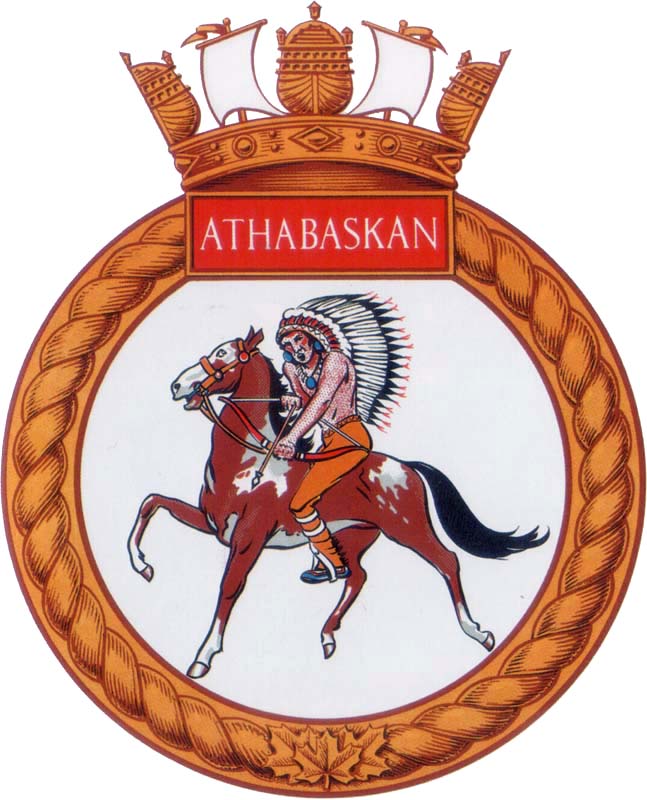HMCS ATHABASKAN Badge

Blazon
Argent a Native American in full-feathered head-dress proper clad in buckskin breeches leggings and moccasins Or the latter beaded Azure and Gules bare to the waist except for a necklace of bear's claws Argent and shells Azure and ear ornaments of the last, mounted bareback upon a pony being halted from the trot the man holding a drawn bow with arrow Gules pointing downwards.
(Glossary of Heraldic Terms)
Significance
This badge design is based on the one which had been planned by officers of the original ATHABASKAN, but was not completed before that ship was lost in action against the enemy. The elements of the originally planned design have been retained in the new official badge as a special tribute to those gallant officers and men who went down with their ship, fighting. Those of the original ship's company who survived that fateful night, as well as those now serving in the new ATHABASKAN, may take the utmost pride in their badge for it commemorates an action that ranks with the best in British naval history of courage and devotion to duty.
Remarks
Athabaskan was commissioned in February 1943, and spent most of her wartime career on the eastern side of the Atlantic. On the night of April 29, 1944 she was torpedoed and sunk whilst engaging two German destroyers. She wore pennant G07. Athabaskan (II) was one of four Tribal class destroyers built in Halifax between 1945 and 1948. Commissioned in January 1948, she saw action in Korea before paying off in April 1966. She wore pennant R79 and then later 219. The current Athabaskan (III), was a member of the four ship Tribal class of DDH's, and wore pennant 282 until being paid off in 2017.
Motto
WE FIGHT AS ONE
Colours
White and Scarlet
Battle Honours
The Second World War
ARCTIC, 1943-44; ENGLISH CHANNEL, 1944.
United Nations Operations - Korea - 1950- 1953
KOREA, 1950-53.
The Gulf War
GULF AND KUWAIT.
References
Badges Of The Canadian Navy by Arbuckle, J. Graeme. Halifax: Nimbus Publishing, 1987.
CFP 267 - Badges of the Canadian Forces, Minister of Supply and Services Canada, 1977.
